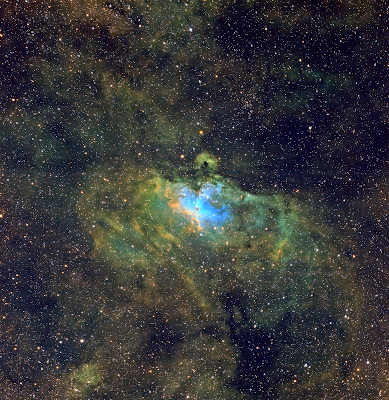I used my mono imaging rig (an Altair 60eDF doublet refractor fitted with a 0.8x FR with an 8 channel filter wheel, and an ASI 533MM Pro camera driven by an iOptron CEM26 mount) and took data of M16 (The Eagle nebula) across all channels over the course of the night. I shot 100 mins of LRGB and 105 mins of SHO data using NINA which I later integrated in Pixinsight and processed to produce the various narrow band and visible light palette combinations shown. I found that by using the Hydrogen for the red and Oxygen for both the blue and green channels gave the best natural colour representation (HOO), although an LRGB composition was also compiled. The various ways of combining thee data help better identify the various gases present in the nebula, enhancing features like the so called "pillars of creation".
Click on an image to get a closer view
Chris Bowden










No comments:
Post a Comment